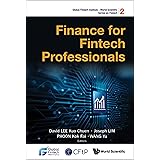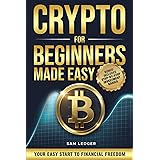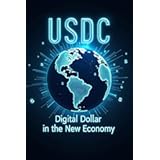Have you ever heard about a promising technology or investment, only to see it take off much later, surprising everyone who wasn’t paying close attention? In the fast-paced world of digital assets, this happens more often than you might think. The video above dives into a fascinating snapshot from late 2020, highlighting several “sleeping giant” cryptocurrencies that were on the cusp of significant developments. These weren’t obscure projects, but major players whose recent news signaled potential for growth and impact.
This article expands on those insights, exploring the underlying technologies and the broader implications of the events discussed in the video. We’ll break down why these developments were so crucial for each project, and what they revealed about the evolving cryptocurrency landscape. From Bitcoin’s journey toward mainstream acceptance to innovative applications of blockchain technology, let’s explore these digital assets.
Bitcoin: Shifting Tides and Acknowledged Value
For years, Bitcoin faced heavy skepticism from traditional financial figures. Noted economists like Nouriel Roubini were staunch critics, often dismissing digital currencies as fads. However, as the video highlighted, Roubini’s perspective began to shift, acknowledging Bitcoin as a “partial store of value.” This admission, particularly from such a vocal bear, marked a significant turning point in the cryptocurrency narrative.
A store of value is an asset that maintains its purchasing power over time without depreciating. Historically, gold has served this role due to its scarcity and universal acceptance. Roubini’s statement underscored Bitcoin’s growing recognition for similar properties, differentiating it from thousands of other digital tokens he deemed less robust. This acknowledgment wasn’t just about one economist changing his mind; it symbolized a broader capitulation among traditional finance, signaling that Bitcoin was becoming too big to ignore. It reinforced Bitcoin’s position as a foundational digital asset, solidifying its role as “digital gold” in the minds of many.
Cardano (ADA): Balancing Growth with Decentralization
Cardano, a prominent proof-of-stake blockchain, garnered attention in the video due to Binance’s involvement with its stake pools. Binance, one of the world’s largest cryptocurrency exchanges, was reportedly behind 18 stake pools on the Cardano network. This development sparked a lively debate within the Cardano community, highlighting a crucial tension in the blockchain space: the balance between attracting major institutional players and maintaining true decentralization.
Stake pools are essential to Cardano’s operation, allowing ADA holders to delegate their coins to a pool operator who validates transactions and mints new blocks. While Binance’s participation brought significant liquidity and attention to Cardano, some community members worried about the potential for centralization if a single entity controlled too many stake pools. Conversely, others viewed it as a positive sign, indicating growing institutional interest and confidence in the Cardano ecosystem. This dynamic illustrates the ongoing challenge for blockchain projects: fostering adoption and growth while upholding the core principles of distributed ledger technology.
Ethereum (ETH): The Dawn of Eth2 Staking
Ethereum, the second-largest cryptocurrency by market capitalization, was buzzing with anticipation for the launch of Eth2 (now known as the Beacon Chain and subsequent upgrades). The video touched on the progress of ETH deposits into the Eth2 deposit contract, a critical step required for the network’s transition from a proof-of-work to a proof-of-stake consensus mechanism. This shift was, and still is, arguably the most significant upgrade in Ethereum’s history, promising enhanced scalability, security, and sustainability.
The goal was to reach a minimum threshold of 524,288 ETH staked to activate the Beacon Chain. At the time of the video, a substantial amount of ETH had been deposited, but more was needed. Staking allows ETH holders to lock up their tokens to help secure the network and, in return, earn rewards. This event was likened to Bitcoin’s halving, a programmed scarcity event, underscoring its profound impact on Ethereum’s economic model and future trajectory. The successful launch of Eth2’s initial phases has laid the groundwork for a more robust and energy-efficient Ethereum network, continuing to shape the landscape of decentralized applications (dApps) and DeFi (Decentralized Finance).
Ripple (XRP): Seeking Regulatory Clarity Abroad
Ripple, the company behind the XRP cryptocurrency, made headlines as it explored relocating its global headquarters outside the United States. The video highlighted Ripple’s establishment of a new regional office in the Dubai International Financial Centre (DIFC). This move was largely driven by the company’s search for clearer regulatory frameworks, which it felt were lacking in the US. Ripple’s focus on enterprise solutions for global payments meant that regulatory certainty was paramount for its business model.
Dubai, known for its progressive stance on digital assets and its ambition to become a global fintech hub, offered a more favorable environment. Navin Gupta, Ripple’s Managing Director for South Asia and MENA, cited the region’s large client base as a key factor in choosing Dubai. This expansion underscored Ripple’s commitment to global growth, despite facing regulatory ambiguities in its home country. The strategic establishment of a regional hub like Dubai allowed Ripple to continue serving its diverse international clientele while navigating the complex global regulatory landscape for digital currencies.
Energy Web Token (EWT): Powering a Sustainable Future
The Energy Web Token (EWT) featured prominently due to its partnership with the InterWork Alliance (IWA). This collaboration underscored Energy Web’s mission to accelerate the decarbonization of the global energy system using blockchain technology. The IWA is a non-profit organization dedicated to creating standard frameworks for token-enabled ecosystems, essentially building the rules for how different blockchain-based systems can interact seamlessly.
Energy Web joined the IWA’s Sustainability Business Working Group, focusing on critical issues like carbon emissions. By collaborating with a global member base, Energy Web aimed to set standards for building distributed applications within the energy sector. This includes frameworks for tokenizing energy assets, creating smart contracts for energy services, and enabling privacy-preserving analytics for multi-party data. Jesse Morris, CCO of Energy Web, emphasized that the energy sector isn’t isolated; it intersects with telecom and finance. This partnership was a significant step towards ensuring that blockchain solutions in energy could integrate with broader industrial ecosystems, driving collective progress towards a sustainable future powered by decentralized energy resources.
VeChain (VET): Combating Fraud and Enhancing Transparency
VeChain, a blockchain platform focused on supply chain management, caught attention with its adoption by US company Health Evolution. This partnership aimed to develop a supplement safety solution to protect consumers, leveraging VeChain’s blockchain and Real Items’ technology. The problem at hand was significant: over 170 million Americans regularly take dietary supplements, yet many are vulnerable to fraud, according to health professionals and state attorneys general.
Health Evolution chose VeChain to provide transparency and authenticity in the supplement supply chain. By utilizing VeChain’s NFT (Non-Fungible Token) standard in conjunction with Real Items, consumers gained the ability to verify the origin, authenticity, quantity, and effectiveness of their supplements. This process makes it incredibly difficult for fraudulent products to enter the market. The adoption by a US company was particularly noteworthy, showcasing VeChain’s global reach and its potential to solve real-world problems beyond its origins as a Chinese company. This application of blockchain technology fundamentally enhances consumer trust and product integrity, a crucial step in industries plagued by counterfeiting and lack of transparency.
Chainlink (LINK): Connecting Real-World Data to Smart Contracts
Chainlink, a decentralized oracle network, continued to expand its utility through a partnership with the cryptocurrency project Parsiq. The video highlighted how Parsiq integrated Chainlink’s price feed oracles, enabling their use as “smart triggers” within Parsiq’s monitoring and automation platform. This integration was a testament to Chainlink’s growing importance as a bridge between off-chain data and on-chain smart contracts.
Parsiq is an off-chain automation solution that allows users and enterprises to monitor blockchain data and automate workflows. For example, it can send alerts via Telegram when specific blockchain activity occurs or log notable events in personal record-keeping services. By integrating Chainlink’s reliable and tamper-proof price feeds, Parsiq could create even more sophisticated triggers. Imagine a smart contract that automatically executes a trade when a certain asset’s price, verified by Chainlink, hits a specific threshold. This synergy significantly enhanced the capabilities of both platforms, demonstrating how Chainlink’s oracle services are indispensable for building complex and responsive decentralized applications that interact with the real world.
TrustSwap (SWAP): Facilitating Decentralized Launches
TrustSwap, a platform known for its innovative decentralized finance (DeFi) solutions, made news with an announcement regarding a liquidity token offering on its launchpad. The video mentioned that Coin, a US-based FinTech startup founded by Microsoft alumni, chose TrustSwap to execute its liquidity token offering. This collaboration highlighted TrustSwap’s growing reputation as a preferred platform for launching new crypto projects.
Coin’s decision to partner with TrustSwap was significant, especially given its experienced leadership from a major tech company. TrustSwap provides a secure and reliable framework for token launches, offering features like time-locked token releases and audited smart contracts, which build trust for investors and project teams alike. Coin itself was positioned as a decentralized exchange (DEX) aiming to differentiate itself with features like artificial intelligence and atomic swaps, offering a non-custodial and anonymous trading experience without Know Your Customer (KYC) requirements. This partnership demonstrated TrustSwap’s crucial role in the DeFi ecosystem, enabling innovative projects like Coin to launch effectively and reach a broader audience, contributing to the expansion of decentralized trading platforms.
Enjin (ENJ): Pioneering the NFT Revolution
The final “sleeping giant” discussed in the video was Enjin, a pioneering project in the non-fungible token (NFT) space. The focus was on the upcoming 2020 NFT Awards, highlighting the burgeoning interest and potential for mainstream adoption of NFTs. Enjin had been at the forefront of creating and integrating NFTs into gaming and other digital experiences, long before they became a widespread cultural phenomenon.
NFTs are unique digital assets representing ownership of a specific item or piece of content, stored on a blockchain. Unlike cryptocurrencies like Bitcoin, each NFT is unique and cannot be replaced by another identical item. The NFT Awards served as a barometer for public interest, showcasing popular NFTs like Crypto Stamp and Pop Star from Job Tribes. Enjin’s platform allowed creators to mint and manage these unique digital assets, enabling true digital ownership and unlocking new economic models for artists, gamers, and developers. This early focus on NFTs positioned Enjin as a key infrastructure provider in a sector that would later experience explosive growth, underscoring the long-term vision behind the cryptocurrency and its ecosystem.







